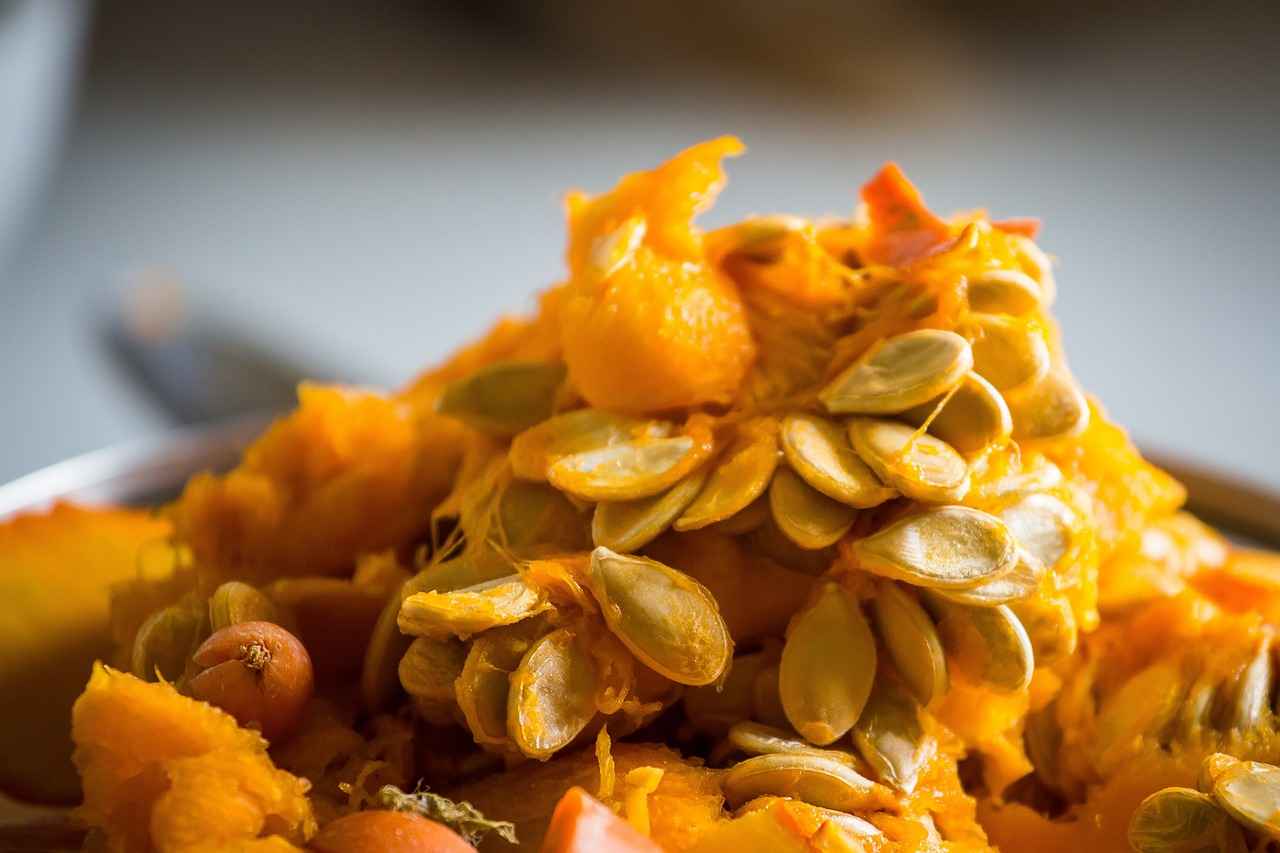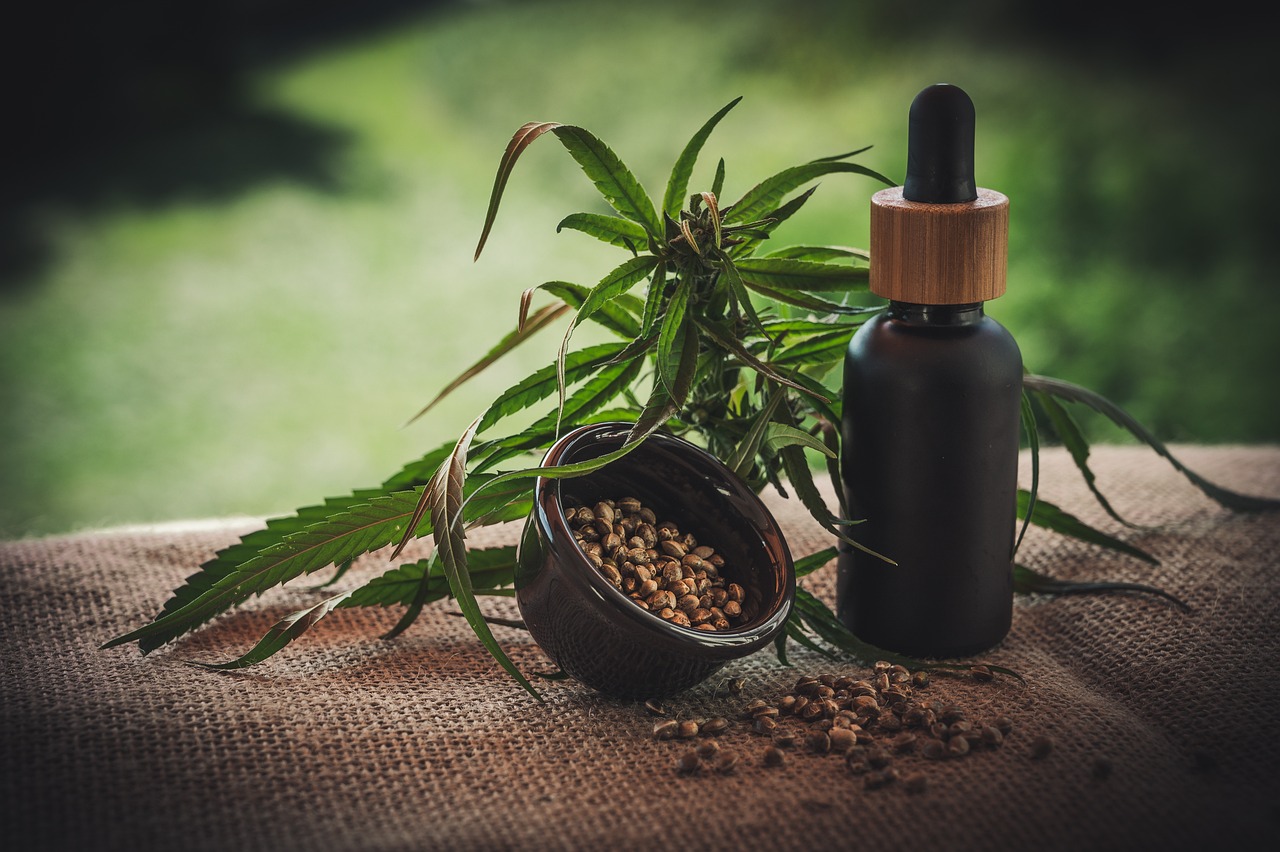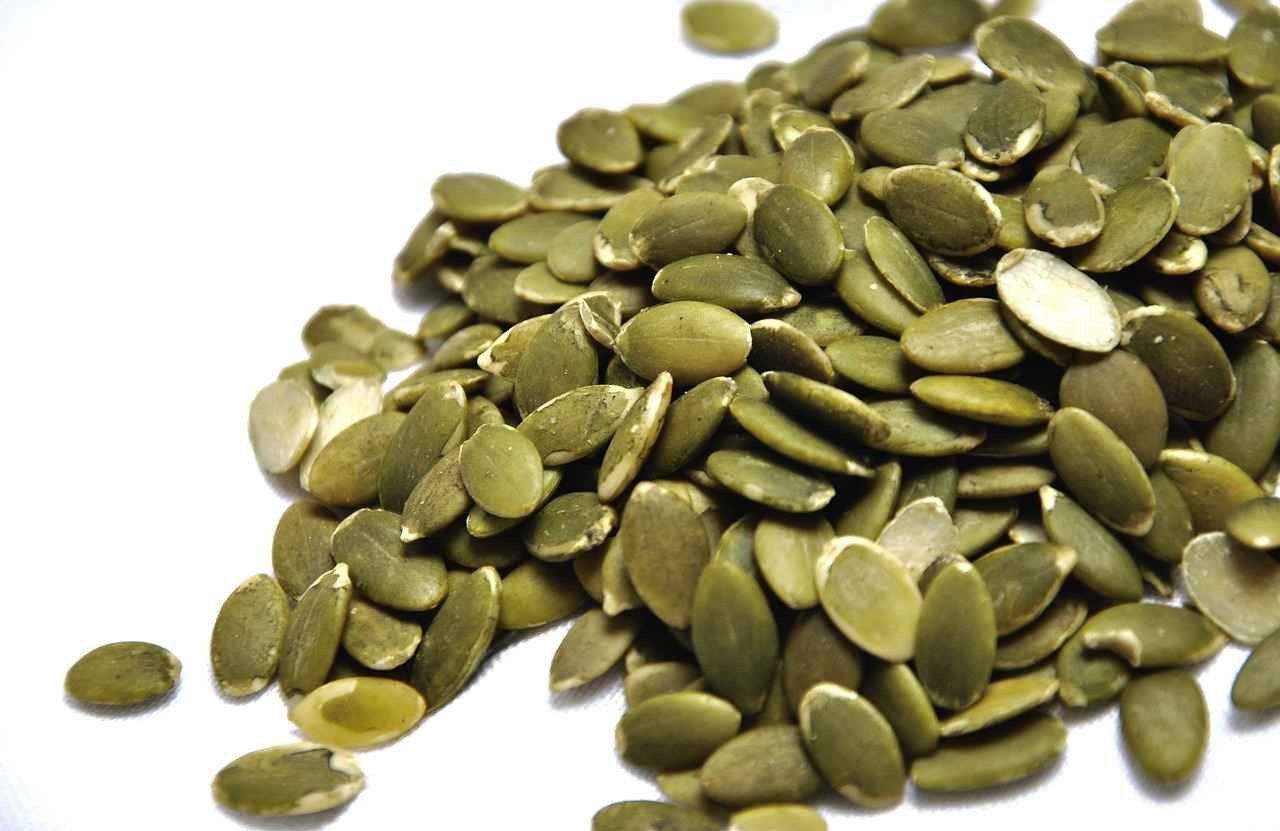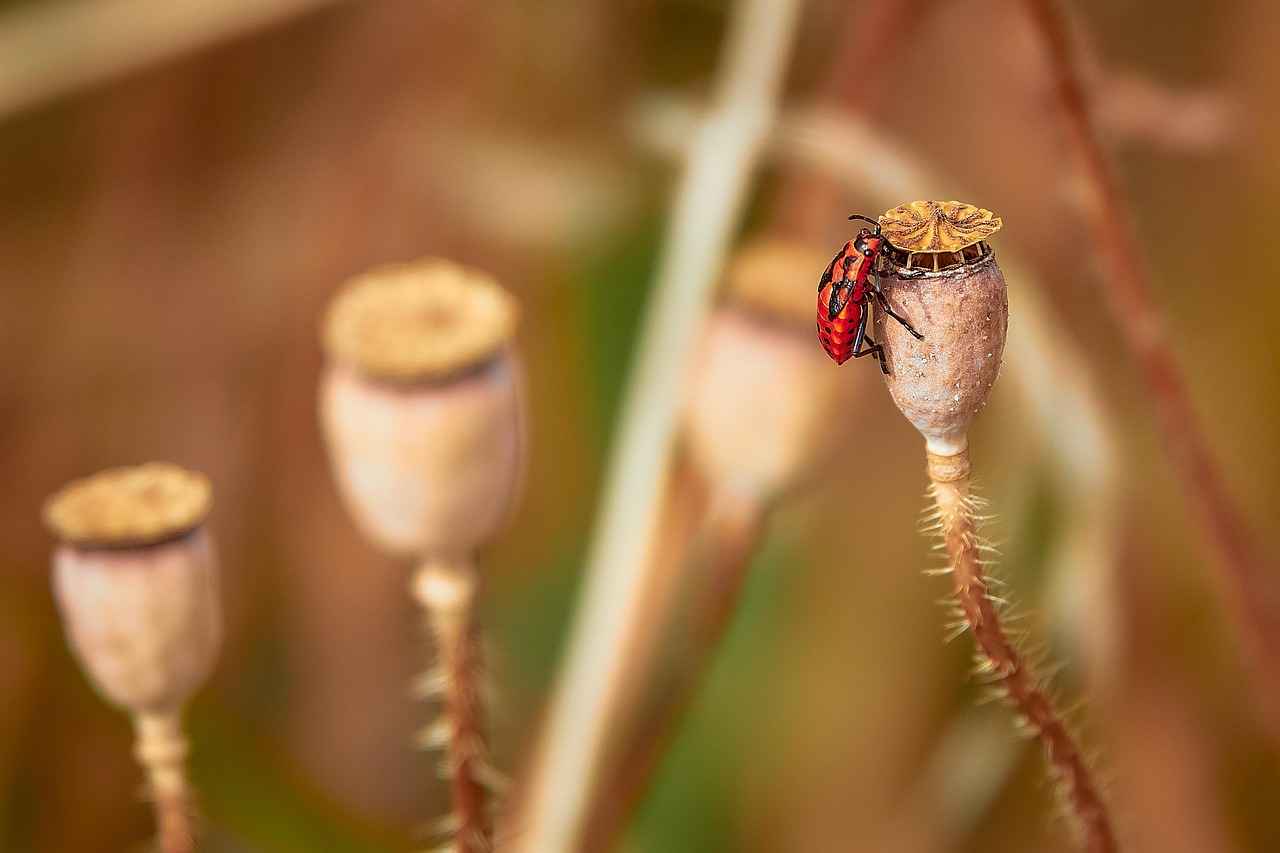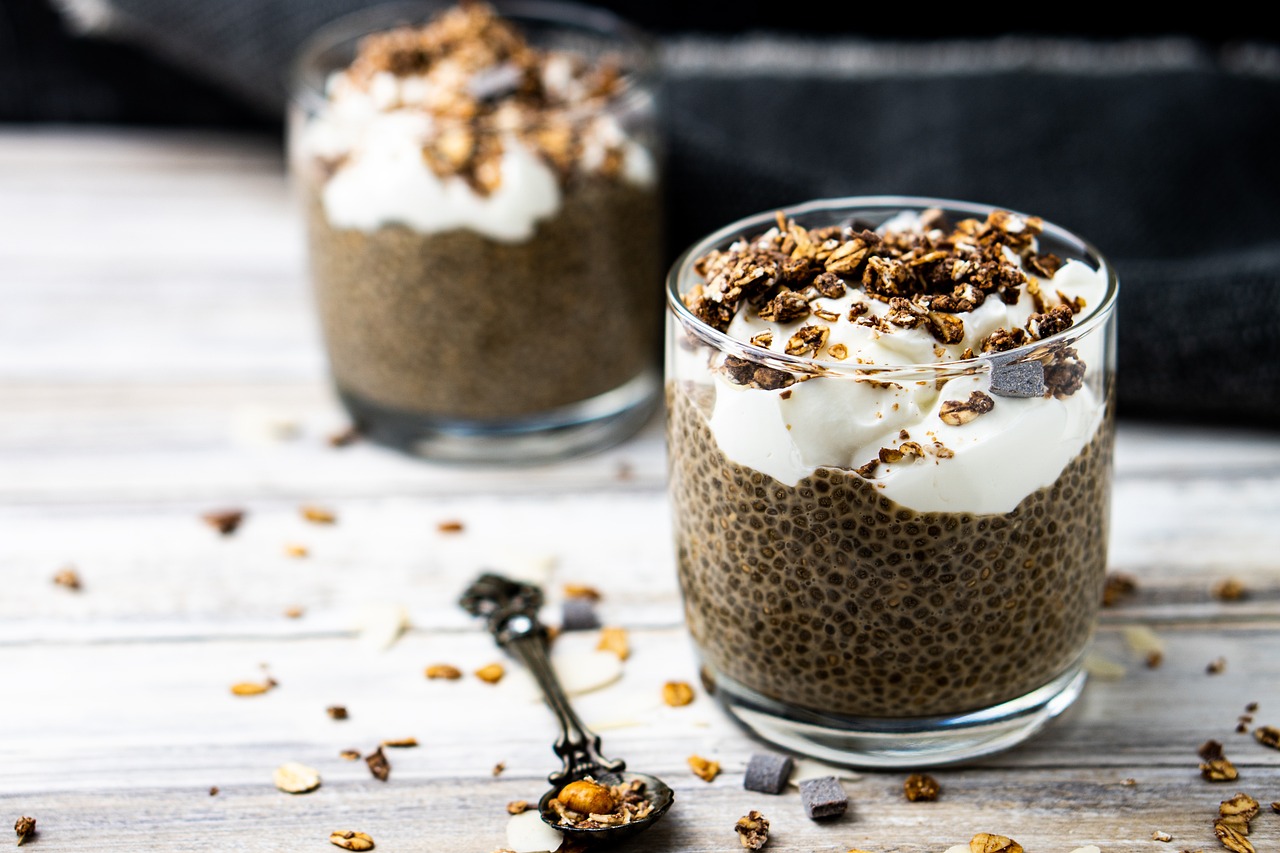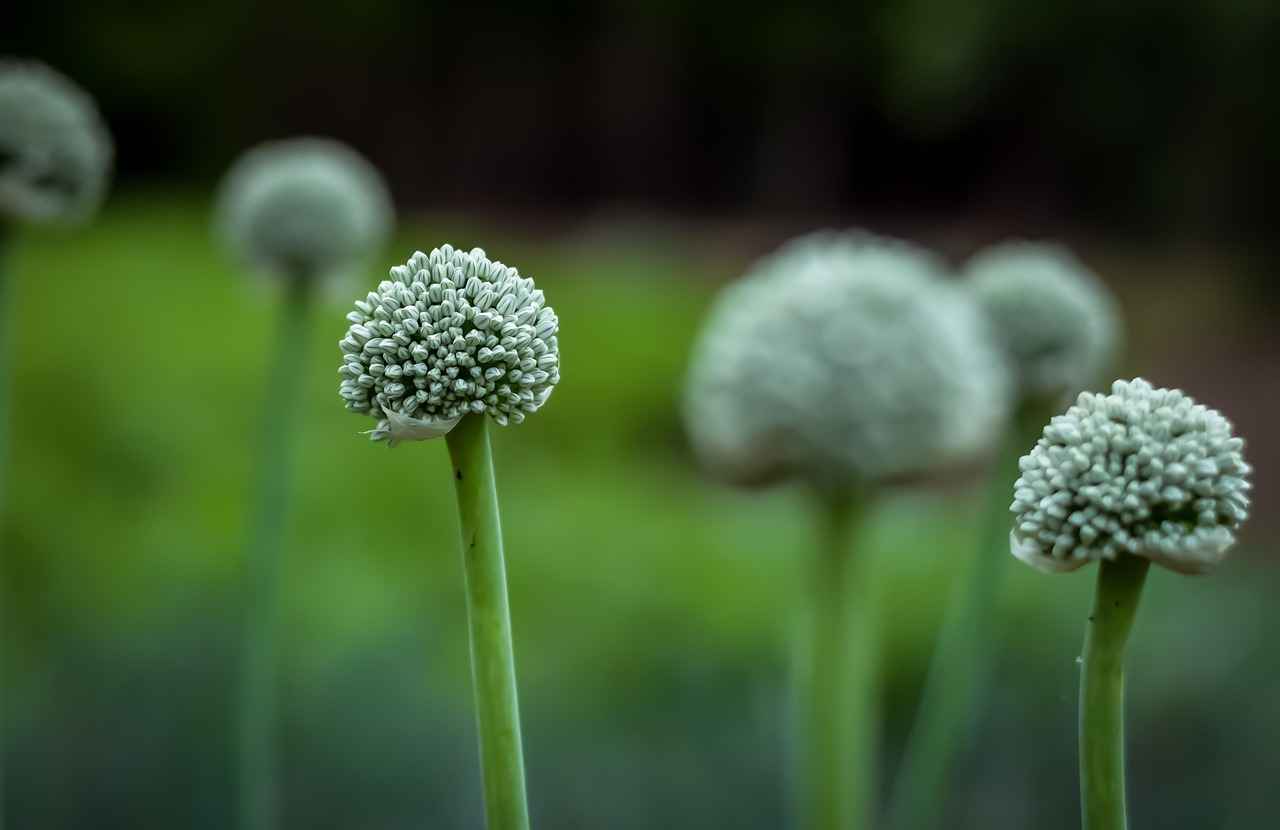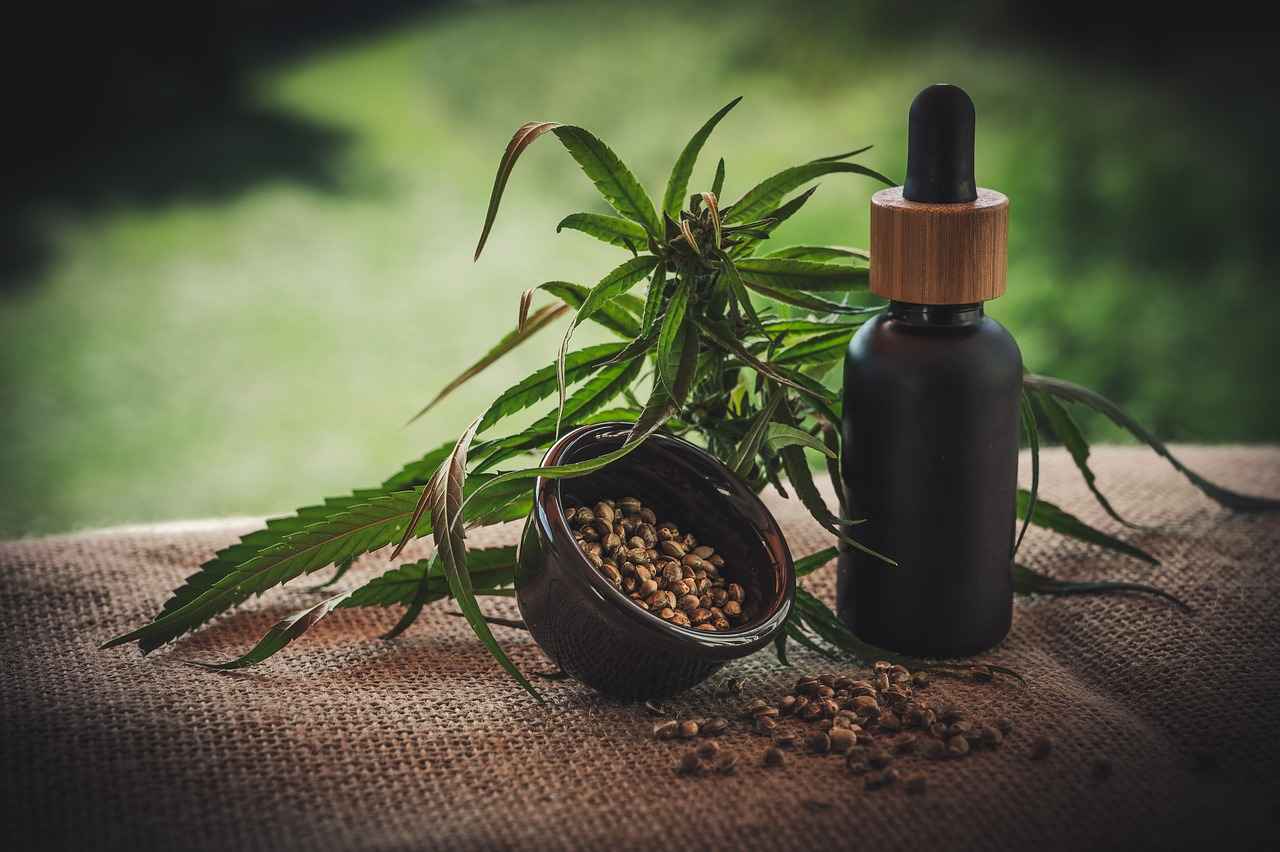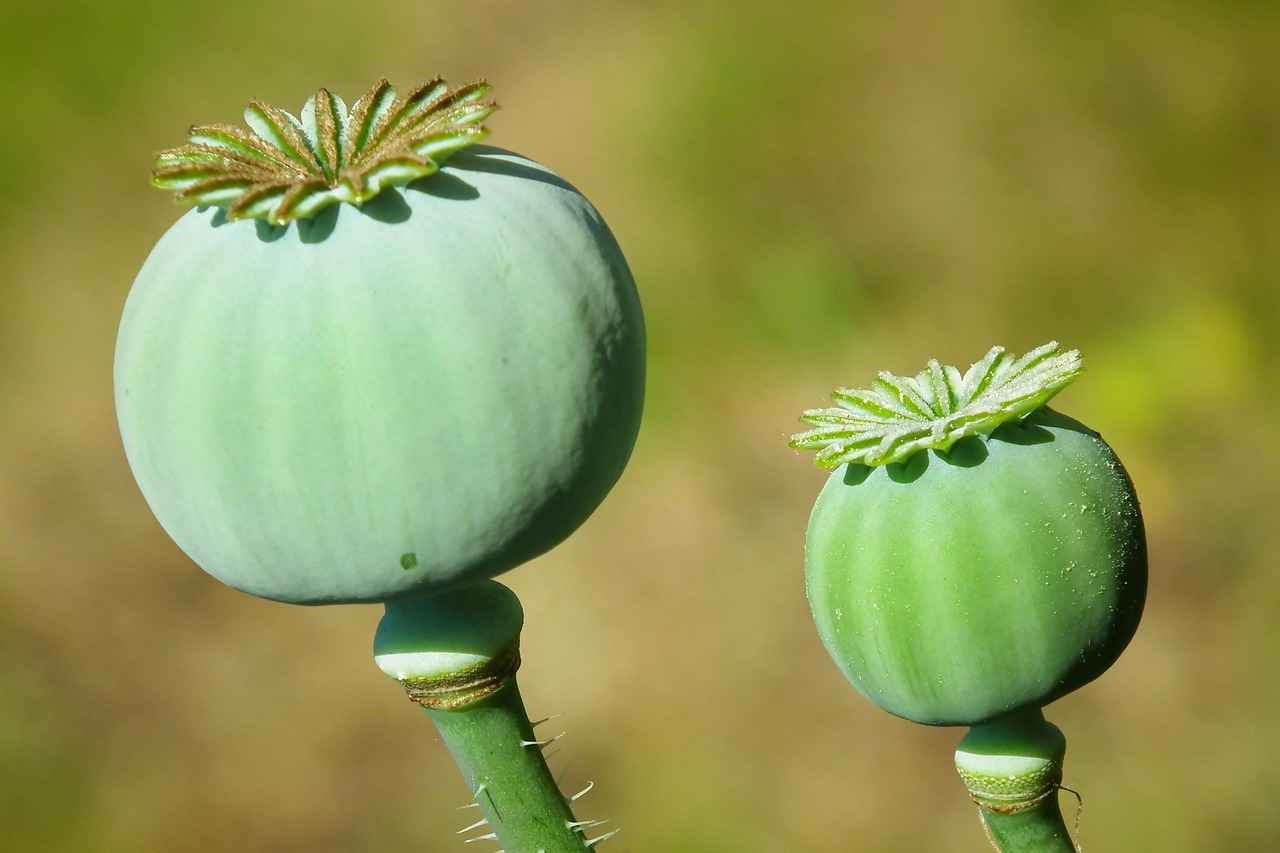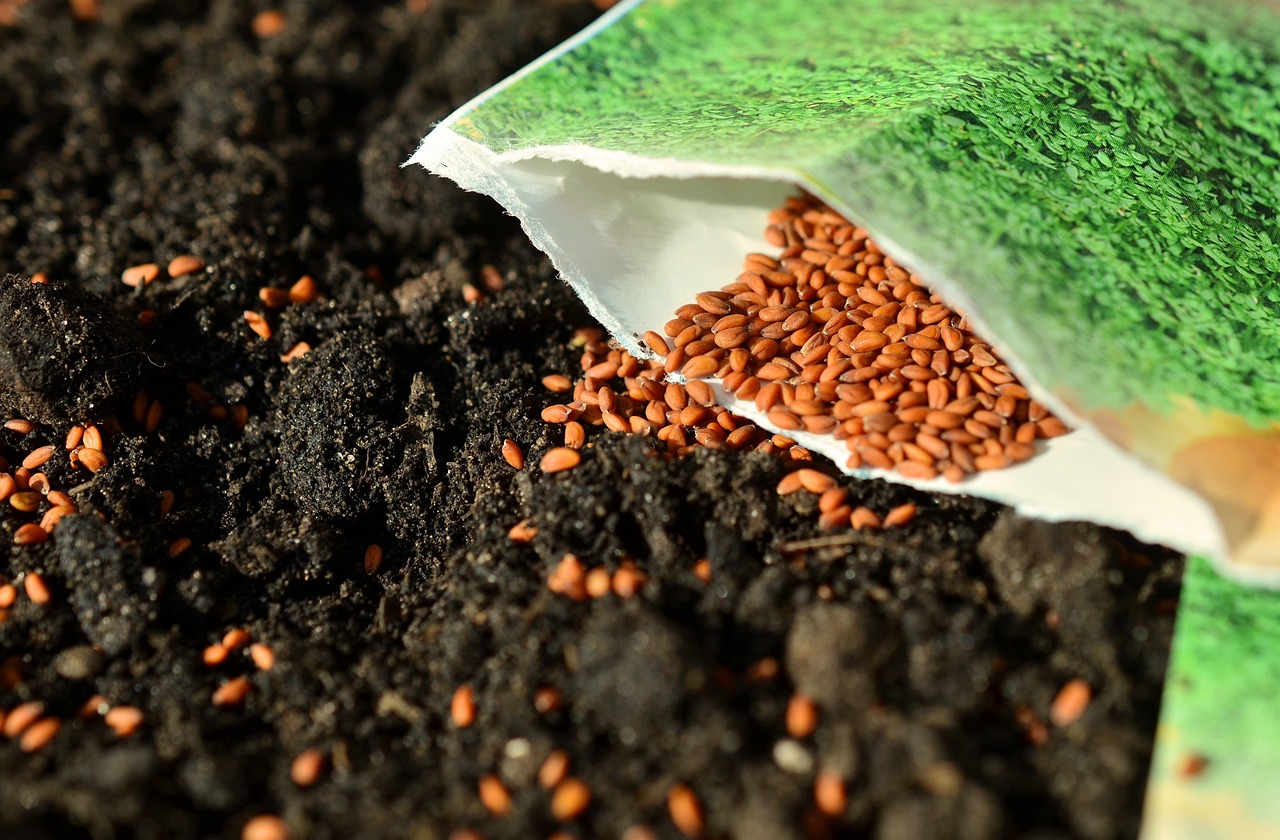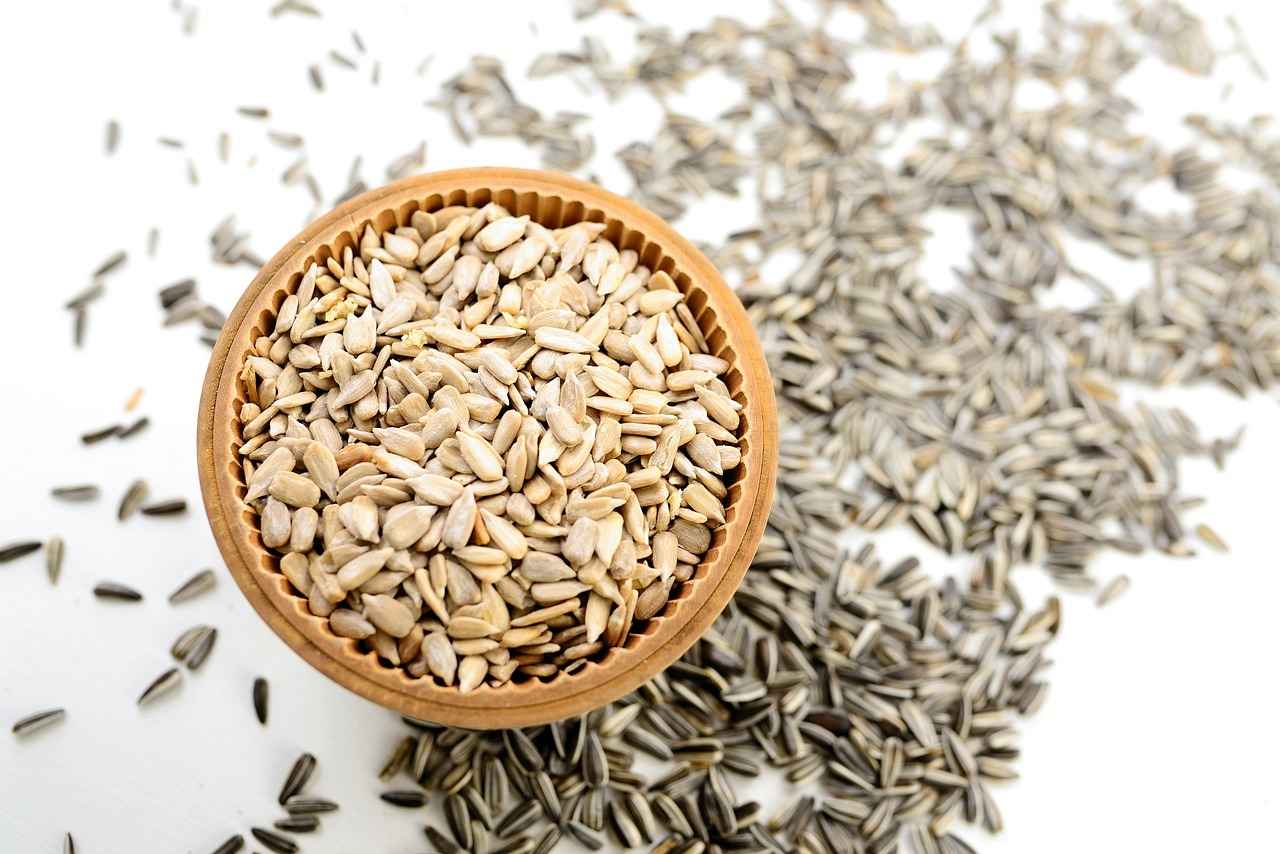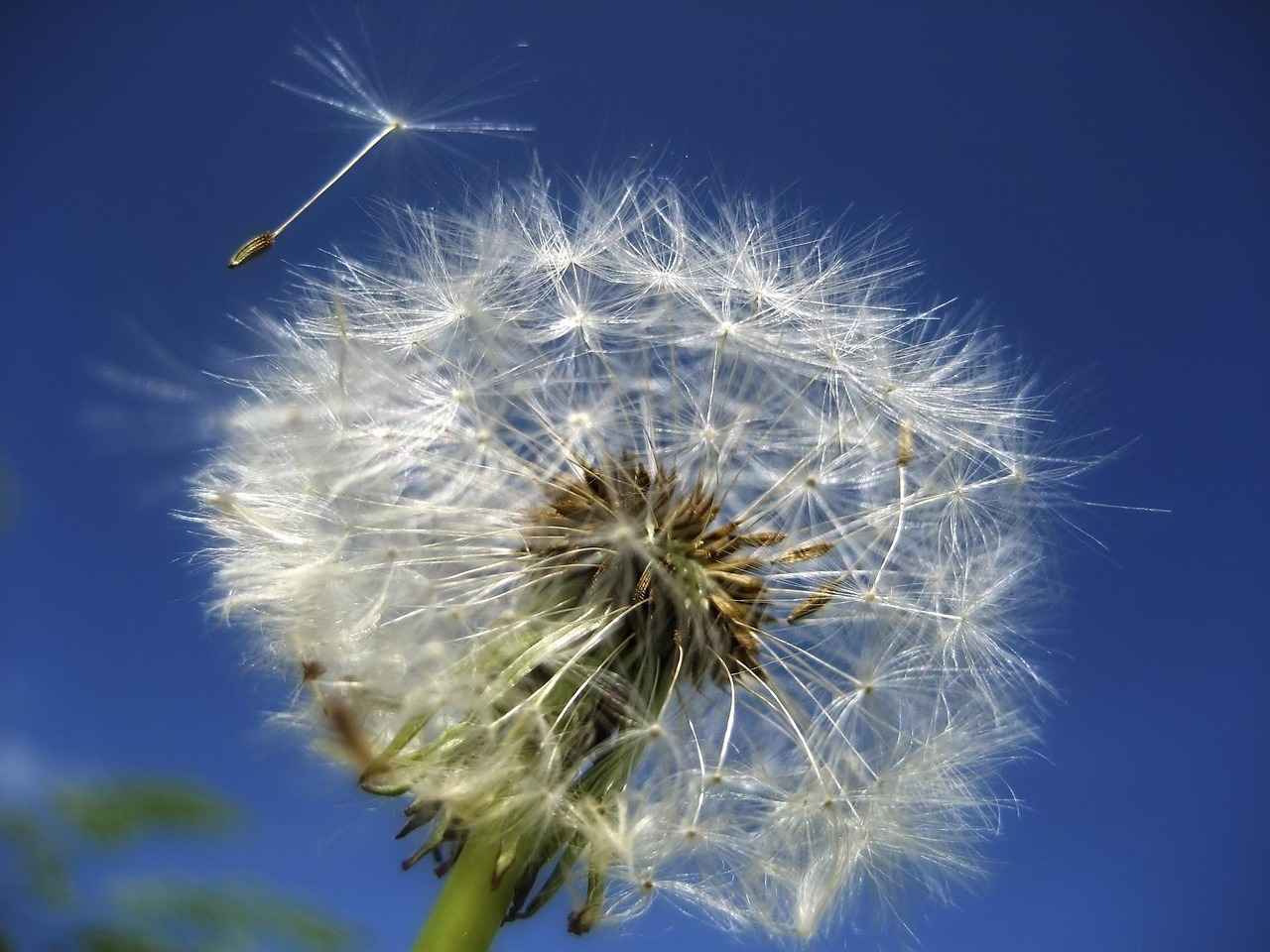Chia seeds have gained popularity as a superfood, and for good reason. These tiny seeds are not only versatile but also packed with essential nutrients. This article delves into the various ways you can incorporate chia seeds into your daily meals, highlighting their nutritional benefits, preparation methods, and some creative recipes that can enhance your diet.
Chia seeds, derived from the Salvia hispanica plant, are tiny black or white seeds that are rich in omega-3 fatty acids, fiber, protein, and antioxidants. Their unique composition makes them an excellent addition to any diet. Regular consumption can aid in digestion, support heart health, and even assist in weight management due to their high fiber content, which promotes a feeling of fullness.
Breakfast is the perfect opportunity to add chia seeds to your meals. Here are a couple of popular methods:
- Chia Seed Pudding: Combine chia seeds with your choice of milk (dairy or plant-based) and let it sit overnight. By morning, you’ll have a creamy, nutritious pudding that can be topped with fruits, nuts, or honey.
- Chia-Infused Smoothies: Add a tablespoon of chia seeds to your morning smoothie. They blend seamlessly and provide an extra nutrient boost without altering the flavor.
Absolutely! Chia seeds can be a fantastic ingredient in baking. They not only add nutrition but also help retain moisture in baked goods. Here’s how:
- Substituting Eggs: Chia seeds can replace eggs in vegan recipes. Mix one tablespoon of chia seeds with three tablespoons of water, let it sit for a few minutes to thicken, and use it as you would an egg in your recipes.
- Chia Seeds in Muffins and Bread: Incorporate chia seeds into your favorite muffin or bread recipes to enhance their fiber content and add a delightful crunch.
Chia seeds can elevate your salads and dressings, making them not only tastier but also healthier:
- Chia Seed Dressings: Blend chia seeds with olive oil, vinegar, and your favorite herbs to create a nutritious dressing that adds a unique texture to your salads.
- Sprinkling on Salads: Simply sprinkle chia seeds on top of your salads for added crunch and a boost of nutrients.
While chia seeds are generally safe for most people, there are some risks to consider:
- Potential Allergies: Some individuals may experience allergic reactions or digestive discomfort. It’s essential to start with small amounts to see how your body reacts.
- Recommended Daily Intake: Consuming about 1-2 tablespoons per day is generally recommended for optimal health benefits.
Chia seeds can be used in a variety of recipes beyond breakfast. Here are a couple of creative ideas:
- Chia Seed Energy Bars: Combine chia seeds with oats, nuts, and honey to create a nutritious energy bar that’s perfect for on-the-go snacking.
- Chia Seed Jam: Use chia seeds to make a healthy jam by mixing them with mashed fruits and a bit of sweetener. This jam is a great alternative to traditional sugary spreads.
Incorporating chia seeds into your meals is a simple way to boost your nutrition. With their versatility, they can enhance everything from breakfast to snacks. By understanding their benefits and experimenting with various recipes, you can easily make chia seeds a staple in your diet.
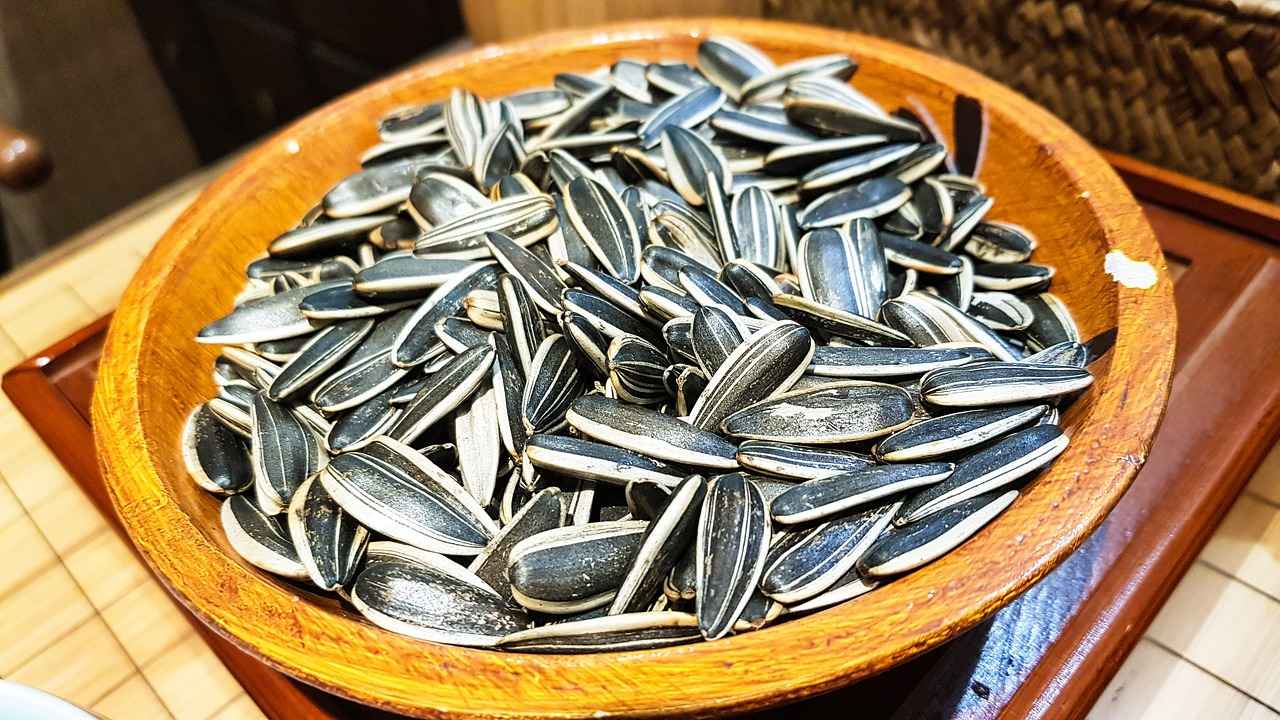
What Are Chia Seeds and Their Nutritional Benefits?
Chia seeds, derived from the Salvia hispanica plant, are tiny yet powerful seeds that have gained immense popularity in health and wellness circles. These seeds are not only versatile but also packed with essential nutrients that can significantly enhance your diet. Understanding their unique nutritional profile can inspire you to incorporate them into your meals.
Rich in Nutrients: Chia seeds are an excellent source of omega-3 fatty acids, which are important for heart health and brain function. They contain a significant amount of fiber, which aids in digestion and helps maintain a healthy weight by promoting a feeling of fullness. In addition, chia seeds are a great source of protein, making them a valuable addition to vegetarian and vegan diets.
Moreover, these seeds are rich in antioxidants, which help combat oxidative stress and inflammation in the body. This combination of nutrients makes chia seeds a superfood that can contribute to overall health and wellness.
How Do Chia Seeds Support Digestive Health? The high fiber content in chia seeds plays a crucial role in digestive health. Fiber is known to promote regular bowel movements and prevent constipation. When chia seeds are soaked in water, they expand and form a gel-like substance, which can help to improve gut health by acting as a prebiotic. This gel can also help to slow down digestion, leading to better nutrient absorption.
Can Chia Seeds Help with Weight Management? Including chia seeds in your diet can be beneficial for weight management. Their high fiber and protein content can contribute to a feeling of fullness, which may help reduce overall calorie intake. Additionally, chia seeds can absorb up to 12 times their weight in water, creating a gel that expands in your stomach and keeps you satisfied for longer periods.
Are Chia Seeds Beneficial for Heart Health? The omega-3 fatty acids found in chia seeds are known for their heart-protective properties. They can help lower cholesterol levels, reduce inflammation, and improve overall cardiovascular health. Regular consumption of chia seeds may contribute to a lower risk of heart disease.
How to Maximize the Benefits of Chia Seeds? To fully benefit from chia seeds, it’s important to consume them in their soaked form or ground. Soaking chia seeds in water or adding them to smoothies allows for better nutrient absorption. Ground chia seeds can be easily incorporated into baked goods, oatmeal, and even sprinkled on salads for added texture and nutrition.
In summary, chia seeds are a nutrient-dense superfood that can enhance your diet in numerous ways. From supporting digestive health and aiding in weight management to promoting heart health, these tiny seeds pack a powerful punch. By understanding their benefits and incorporating them into your meals, you can take significant steps towards improving your overall health.

How to Incorporate Chia Seeds into Breakfast?
Chia seeds are a powerhouse of nutrition, making them an excellent addition to your breakfast routine. These tiny seeds are packed with essential nutrients, including omega-3 fatty acids, fiber, protein, and antioxidants. Incorporating chia seeds into your morning meals can not only enhance their nutritional value but also add variety and flavor. Below, we explore a range of creative ways to include chia seeds in your breakfast.
Chia seeds are incredibly versatile and can be easily integrated into various breakfast options. Their ability to absorb liquid and form a gel-like consistency makes them perfect for creating unique textures in dishes. Additionally, they are rich in fiber, which can help keep you feeling full longer, making them an ideal choice for a satisfying breakfast.
One of the simplest ways to enjoy chia seeds is by making chia seed pudding. To prepare this dish, combine 3 tablespoons of chia seeds with 1 cup of milk or a plant-based alternative, such as almond or coconut milk. Add a sweetener of your choice, like honey or maple syrup, and let it sit in the fridge overnight. In the morning, top it with fresh fruits, nuts, or granola for a nutritious breakfast.
Another fantastic way to incorporate chia seeds into your breakfast is by adding them to smoothies. Simply blend your favorite fruits, vegetables, and a liquid base, then stir in 1-2 tablespoons of chia seeds. This not only enhances the nutritional profile of your smoothie but also provides a pleasant texture. For a refreshing twist, try a green smoothie with spinach, banana, and almond milk, topped with chia seeds.
Transform your traditional oatmeal by mixing in chia seeds. Cook your oats as usual, then stir in 2 tablespoons of chia seeds while cooking. This addition will increase the fiber content and create a creamier texture. Top with fruits, nuts, or a drizzle of nut butter for added flavor and nutrition.
For those who love pancakes, consider adding chia seeds to your batter. Mix your pancake ingredients and fold in 2 tablespoons of chia seeds before cooking. This will provide a delightful crunch and boost the nutritional value of your pancakes. Serve with fresh berries and a dollop of yogurt for a balanced breakfast.
If you’re often in a rush, chia seed breakfast bars are a perfect solution. Combine oats, nut butter, honey, and 1/4 cup of chia seeds in a bowl. Press the mixture into a baking dish and refrigerate until firm. Cut into bars for a convenient, healthy snack that you can take on the go.
When selecting chia seeds, opt for organic, non-GMO varieties to ensure the highest quality. Check for freshness and store them in a cool, dry place to maintain their nutritional benefits. Whole chia seeds can be used as-is, while ground chia seeds offer a different texture and can be easily incorporated into various recipes.
Incorporating chia seeds into your breakfast is a simple and effective way to enhance your diet. From pudding and smoothies to pancakes and bars, there are countless delicious ways to enjoy these nutrient-dense seeds. Start your day with the energy and nutrition that chia seeds provide!
Chia Seed Pudding: A Simple Recipe
Chia seed pudding is a delicious and nutritious breakfast option that can be prepared effortlessly. This versatile dish has gained popularity due to its ease of preparation and numerous health benefits. By mixing chia seeds with your choice of milk—whether it be dairy, almond, coconut, or oat—you can create a creamy and satisfying pudding that is perfect for starting your day.
To make chia seed pudding, you only need a few simple ingredients:
- Chia seeds – These tiny seeds are packed with nutrients.
- Milk or plant-based alternative – Choose your favorite type for a creamy texture.
- Sweetener – Honey, maple syrup, or agave can enhance the flavor.
- Flavorings – Vanilla extract or cocoa powder can add depth to your pudding.
The process is incredibly simple. Begin by combining 3 tablespoons of chia seeds with 1 cup of your chosen milk in a bowl or jar. Stir well to ensure the seeds are evenly distributed. Then, add your sweetener and any flavorings you desire. Mix thoroughly and let the mixture sit for about 10 minutes, stirring again to prevent clumping. Afterward, cover the bowl or jar and place it in the refrigerator overnight. This allows the chia seeds to absorb the liquid and swell, resulting in a thick and creamy pudding by morning.
One of the best aspects of chia seed pudding is its customizability. You can top your pudding with a variety of ingredients to suit your taste. Fresh fruits such as berries, bananas, or mangoes can add a burst of flavor and nutrients. Nuts and seeds provide a satisfying crunch, while granola can offer an extra layer of texture. For a decadent twist, consider adding a dollop of nut butter or a sprinkle of dark chocolate chips.
Moreover, chia seed pudding is not just a breakfast option; it can also serve as a healthy snack or dessert. With its high fiber and protein content, it can keep you feeling full and satisfied throughout the day. Additionally, chia seeds are an excellent source of omega-3 fatty acids, which are beneficial for heart health.
For those who are always on the go, chia seed pudding can be prepared in advance and stored in the refrigerator for up to five days. This makes it a convenient option for busy mornings or as a quick grab-and-go snack. Just remember to give it a good stir before eating, as it may thicken further as it sits.
In summary, chia seed pudding is a simple, healthy, and versatile dish that can easily be incorporated into your daily routine. With just a few ingredients and a little bit of time, you can enjoy a nutritious meal that not only tastes great but also supports your overall health.
Chia-Infused Smoothies for a Nutrient Boost
Incorporating chia seeds into your smoothies can significantly enhance their nutritional profile, making them not just a delicious treat but also a powerhouse of health benefits. Chia seeds are rich in omega-3 fatty acids, fiber, and protein, which can provide lasting energy and keep you feeling full longer. But how can you blend them seamlessly into your smoothies for a refreshing and energizing drink?
Chia seeds are incredibly versatile and can easily be added to various smoothie recipes. Their gelatinous texture when soaked in liquid makes them an excellent thickening agent, giving your smoothies a creamy consistency without the need for dairy. Additionally, they are gluten-free and suitable for vegan diets, making them an ideal choice for many dietary preferences.
- Soaking: Soak chia seeds in water or your favorite milk for about 10-15 minutes before adding them to your smoothie. This allows them to expand and absorb moisture, creating a gel-like texture that blends well.
- Blending: If you’re short on time, you can add dry chia seeds directly into your smoothie. However, blending them for a few seconds will help break them down, making them easier to digest.
- Proportion: A good starting point is to add 1-2 tablespoons of chia seeds per serving of smoothie. Adjust according to your taste and nutritional needs.
Here are some easy and nutritious smoothie recipes that highlight the benefits of chia seeds:
1. Berry Chia Smoothie: - 1 cup mixed berries (fresh or frozen) - 1 banana - 1 cup almond milk - 2 tablespoons chia seeds - Blend until smooth and enjoy!2. Green Chia Smoothie: - 1 cup spinach - 1/2 avocado - 1 banana - 1 cup coconut water - 1 tablespoon chia seeds - Blend until creamy for a refreshing green boost.
To make the most out of your chia-infused smoothies, consider the following tips:
- Experiment with Flavors: Chia seeds have a mild taste, so feel free to experiment with different fruits, vegetables, and liquids to find your perfect combination.
- Store Properly: If you make smoothies in bulk, store them in airtight containers in the refrigerator. Consume within 24 hours for the best taste and texture.
- Mix with Other Superfoods: Combine chia seeds with other superfoods like spinach, kale, or protein powders to enhance the nutritional value of your smoothies.
By integrating chia seeds into your smoothies, you not only add a delightful texture but also significantly boost their nutritional content. Whether you’re looking for a quick breakfast or a post-workout snack, chia-infused smoothies are an excellent choice to keep you energized and satisfied.

Can Chia Seeds Be Used in Baking?
Chia seeds, often hailed as a superfood, are not only nutritious but also remarkably versatile in the kitchen. When it comes to baking, these tiny seeds can transform your recipes, adding both moisture and nutritional value without compromising on taste. Let’s explore how to effectively incorporate chia seeds into your baked goods and discover their benefits.
Chia seeds are an excellent addition to baking for several reasons. They are rich in omega-3 fatty acids, fiber, and protein, making them a powerhouse of nutrition. Additionally, when mixed with liquid, chia seeds form a gel-like consistency that can enhance the texture of baked goods. This property makes them a fantastic substitute for eggs, especially in vegan recipes.
To use chia seeds as an egg substitute, the general rule is to combine one tablespoon of chia seeds with three tablespoons of water. Allow the mixture to sit for about 10-15 minutes until it thickens. This chia egg can be used in various recipes, including cakes, cookies, and pancakes, ensuring your baked treats remain fluffy and delicious.
Incorporating chia seeds into muffins and bread recipes not only boosts their fiber content but also adds a delightful texture. For example, adding a quarter cup of chia seeds to your favorite muffin recipe can provide a nutritional boost without altering the flavor. The seeds can absorb moisture, making your muffins moist and tender.
- Chia Seed Cookies: Add chia seeds to your cookie dough for an extra crunch and health boost.
- Granola Bars: Incorporate chia seeds into your homemade granola bars for added nutrition and texture.
- Chia Seed Bread: Experiment with adding chia seeds to your bread dough for a unique flavor and health benefits.
One of the best aspects of chia seeds is their neutral flavor, which means they can be added to both sweet and savory recipes without overpowering other ingredients. This makes them ideal for a wide range of baked goods, from sweet muffins to savory breads.
For optimal freshness, store chia seeds in an airtight container in a cool, dark place. They can last up to two years if stored properly, making them a convenient pantry staple for all your baking needs.
While chia seeds are generally safe for most people, it’s essential to consume them in moderation. Due to their high fiber content, excessive consumption may lead to digestive discomfort. A recommended serving size is about 1-2 tablespoons per day.
In summary, chia seeds are a fantastic ingredient to incorporate into your baking repertoire. They not only enhance the nutritional profile of your baked goods but also provide a unique texture and flavor that can elevate your favorite recipes. Whether you’re looking to make healthier choices or simply want to experiment with new ingredients, chia seeds are a worthwhile addition to your baking endeavors.
Substituting Eggs with Chia Seeds in Recipes
In the realm of vegan baking, finding suitable egg substitutes can be a challenge. However, chia seeds have emerged as a popular and effective alternative. Not only do they provide a binding quality similar to eggs, but they also enhance the nutritional profile of your baked goods. This guide will delve into how to use chia seeds as an egg replacement, ensuring your vegan treats remain fluffy, moist, and delicious.
Chia seeds are rich in omega-3 fatty acids, fiber, and protein, making them a powerhouse ingredient in any recipe. When mixed with water, chia seeds form a gel-like consistency that mimics the texture of eggs, allowing for effective binding in various baked goods. This not only keeps your recipes vegan but also adds a healthy twist.
To use chia seeds as an egg substitute, you need to create a chia egg. The typical ratio is:
- 1 tablespoon of chia seeds to 2.5 tablespoons of water
Follow these simple steps:
- Grind the chia seeds in a blender or coffee grinder for a finer texture (optional).
- Mix the chia seeds with water in a small bowl.
- Let the mixture sit for about 10-15 minutes until it thickens and forms a gel.
Chia eggs can be used in a variety of baked goods, including:
- Muffins: Add moisture and texture without the need for eggs.
- Breads: Enhance the fiber content while maintaining fluffiness.
- Cakes: Achieve a light and airy texture in your favorite vegan cakes.
- Cookies: Bind ingredients together and provide a chewy consistency.
To ensure your baked goods turn out perfectly, consider the following tips:
- Experiment with Ratios: Depending on the recipe, you may need to adjust the amount of chia seeds.
- Combine with Other Ingredients: Pair chia eggs with other binding agents like mashed bananas or applesauce for added moisture.
- Monitor Baking Time: Vegan recipes may require slight adjustments in baking time, so keep an eye on your treats.
While baking with chia seeds is relatively straightforward, there are common pitfalls to watch out for:
- Skipping the Gel Preparation: Always prepare the chia egg beforehand; adding dry seeds directly can lead to dry results.
- Ignoring Flavor Balance: Chia seeds have a mild nutty flavor, but in large quantities, they can affect the taste of your baked goods.
By using chia seeds as an egg substitute, you can create delicious vegan baked goods without compromising on texture or flavor. Their versatility and health benefits make them an excellent addition to any recipe. So, next time you bake, consider reaching for chia seeds to enhance your treats!
Chia Seeds in Muffins and Bread
Incorporating chia seeds into your favorite muffin and bread recipes can significantly enhance both the nutritional profile and texture of these baked goods. These tiny seeds are not just a trendy superfood; they are packed with essential nutrients that can transform your baking experience.
Chia seeds are known for their impressive fiber content, which aids in digestion and promotes a feeling of fullness. Additionally, they are a great source of omega-3 fatty acids, protein, and various minerals. By adding chia seeds to muffins and bread, you are not only boosting their nutritional value but also introducing a unique texture that can make your baked goods more enjoyable.
When adding chia seeds to muffins, consider the following tips:
- Soaking Method: Soak 1 tablespoon of chia seeds in 2.5 tablespoons of water for about 15 minutes. This creates a gel-like consistency that can replace eggs in vegan recipes.
- Mixing In: Add 2 tablespoons of chia seeds directly into your muffin batter. This method will add a delightful crunch without altering the flavor.
- Flavor Pairing: Chia seeds pair well with flavors like banana, chocolate, and berries. Experiment with different combinations to find your favorite.
Chia seeds can also elevate your bread-making game. Here are some ways to use them:
- Hydration Booster: Chia seeds absorb water, which can help keep your bread moist. Consider adding them to whole grain or sourdough recipes for improved texture.
- Nutritious Crust: Sprinkle chia seeds on top of your bread before baking for an attractive and healthy crust.
- Flavor Infusion: Incorporate chia seeds into flavored breads, such as herb or cheese varieties, to add a subtle nutty taste.
Here are a couple of recipes to inspire your baking:
- Chia Seed Banana Muffins: Combine mashed bananas, oats, flour, and soaked chia seeds for a moist and delicious muffin.
- Whole Wheat Chia Bread: Mix whole wheat flour, yeast, and chia seeds to create a hearty bread that is perfect for sandwiches.
Incorporating chia seeds into muffins and bread recipes is an excellent way to enhance both the nutritional value and the overall experience of your baked goods. With their ability to boost fiber content and add a delightful texture, chia seeds are a versatile ingredient that can be easily integrated into your favorite recipes. Whether you are baking for yourself or for a gathering, chia seeds can help you create delicious and healthy treats that everyone will love.
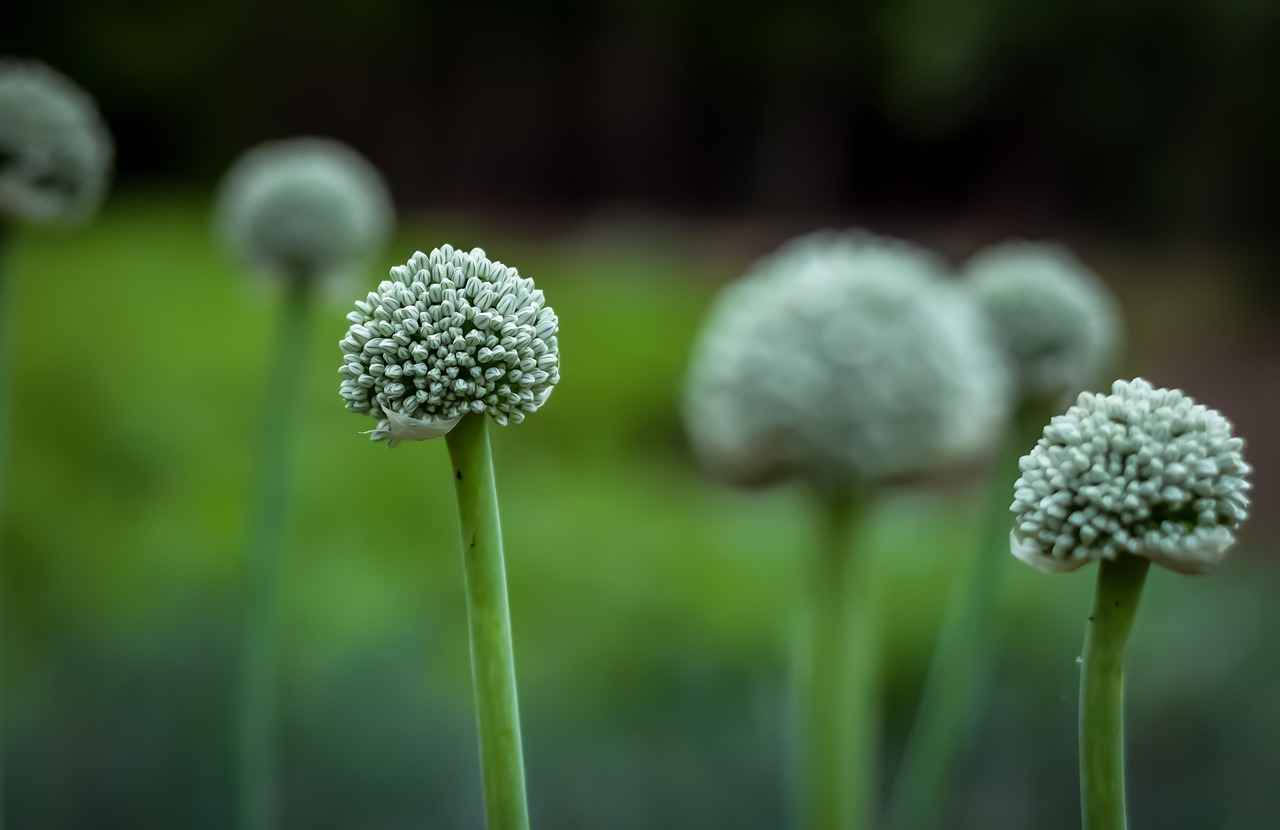
How to Use Chia Seeds in Salads and Dressings?
Chia seeds are not just a trendy superfood, but also a versatile ingredient that can significantly enhance the nutritional value and texture of your salads and dressings. Their ability to absorb liquid and form a gel-like consistency makes them a unique addition that can transform your meals. Below, we explore various ways to incorporate chia seeds into your salads and dressings, ensuring you enjoy both health benefits and delightful flavors.
Chia seeds are tiny powerhouses of nutrition. They are rich in omega-3 fatty acids, fiber, and antioxidants, making them an excellent choice for enhancing the health profile of your salads. By adding chia seeds, you not only increase the nutritional value but also introduce a satisfying crunch that can elevate the overall eating experience.
- Chia Seed Toppings: A simple yet effective way to use chia seeds is by sprinkling them on top of your salads. This adds a delightful crunch and boosts the fiber content. They pair exceptionally well with leafy greens, tomatoes, and cucumbers.
- Chia-Infused Dressings: Create your own salad dressings by blending chia seeds with olive oil, vinegar, and your favorite herbs. This not only thickens the dressing but also infuses it with added nutrients.
- Chia Gel as a Base: Prepare a chia gel by mixing chia seeds with water and letting it sit until it thickens. Use this gel as a base for creamy dressings or as a binder in grain salads.
Making your own dressings with chia seeds is not only easy but also allows you to control the ingredients. Here’s a quick recipe:
Ingredients:- 2 tablespoons chia seeds- 1/2 cup olive oil- 1/4 cup apple cider vinegar- 1 tablespoon honey or maple syrup- Salt and pepper to tasteInstructions:1. Combine all ingredients in a jar.2. Shake well and let it sit for 10-15 minutes to allow the chia seeds to expand.3. Drizzle over your favorite salad and enjoy!
Chia seeds can be used as a topping for various types of salads. They add not only a crunchy texture but also a visual appeal. For the best flavor combinations, try pairing chia seeds with:
- Citrus fruits like oranges or grapefruits for a refreshing salad.
- Avocado for a creamy texture that complements the crunch of the seeds.
- Nuts and seeds for a mixed texture that enhances the overall experience.
While chia seeds are generally safe for most people, it’s important to consume them in moderation. They can absorb a large amount of water, so it’s advisable to drink plenty of fluids when incorporating them into your diet. Some individuals may also experience digestive discomfort if they consume too many seeds at once.
In summary, chia seeds are a fantastic addition to salads and dressings, offering both health benefits and culinary versatility. By experimenting with different methods of incorporation, you can enjoy the unique flavor and texture they bring to your meals.
Chia Seed Dressings: A Healthy Alternative
Chia seeds are not just a trendy superfood; they are a powerhouse of nutrition that can enhance your meals in various ways. One of the most exciting applications of chia seeds is in dressings. Chia seed dressings offer a unique way to boost flavor and nutrition in your salads, making them a healthy alternative to traditional dressings.
Using chia seeds in dressings can significantly increase their nutritional value. Chia seeds are rich in omega-3 fatty acids, fiber, and protein, which can contribute to heart health, improved digestion, and sustained energy levels. By incorporating these tiny seeds into your dressings, you not only enhance their health benefits but also add a delightful texture.
Creating chia seed dressings is simple and requires just a few ingredients. Here’s a basic recipe to get you started:
- Ingredients:
- 2 tablespoons of chia seeds
- 1/4 cup of olive oil
- 1/4 cup of apple cider vinegar or lemon juice
- 1 tablespoon of honey or maple syrup (optional)
- Salt and pepper to taste
1. In a bowl, whisk together the olive oil, vinegar or lemon juice, and sweetener (if using).2. Stir in the chia seeds and let the mixture sit for about 10-15 minutes to allow the seeds to absorb the liquid and thicken.3. Season with salt and pepper to taste.4. Drizzle over your favorite salad or use as a marinade for grilled vegetables.
Chia seed dressings can be customized to suit your taste preferences. Here are a few variations:
- Herbed Chia Dressing: Add fresh or dried herbs like basil, oregano, or dill for an aromatic twist.
- Spicy Chia Dressing: Incorporate a dash of cayenne pepper or red pepper flakes for an added kick.
- Garlic Chia Dressing: Mix in minced garlic or garlic powder for a robust flavor.
Chia seed dressings are incredibly versatile. They can be used not only on salads but also as dips for fresh vegetables or drizzled over grilled meats and fish. The possibilities are endless! Here are some ideas:
- Use as a dressing for quinoa or grain salads.
- Drizzle over roasted vegetables for added flavor.
- Mix into coleslaw for a healthier twist on a classic dish.
Incorporating chia seeds into your dressings can provide numerous health benefits. The high fiber content aids in digestion and helps maintain a feeling of fullness, which can assist with weight management. Additionally, the omega-3 fatty acids found in chia seeds are known to support heart health and reduce inflammation.
In summary, chia seed dressings are a nutritious and tasty alternative to traditional dressings. With their ease of preparation and health benefits, they are a fantastic addition to any meal. Experiment with different flavors and ingredients to find the perfect combination for your palate.
Sprinkling Chia Seeds on Salads for Extra Crunch
Sprinkling chia seeds on salads is a simple yet effective way to enhance both the texture and nutritional value of your meals. These tiny seeds not only provide a delightful crunch but also pack a powerful punch of nutrients, making them an excellent addition to any salad. In this section, we will explore the best combinations for your salads, how to prepare them, and the various health benefits they offer.
Chia seeds are renowned for their nutritional benefits. They are rich in omega-3 fatty acids, which are essential for heart health, and high in fiber, which aids digestion. Additionally, chia seeds are a great source of protein and contain various vitamins and minerals, including calcium, magnesium, and phosphorus. By adding them to your salads, you can significantly boost their overall health profile.
When it comes to incorporating chia seeds into your salads, the possibilities are endless. Here are some delicious combinations:
- Mixed Greens Salad: Combine fresh spinach, arugula, and kale with sliced cucumbers, cherry tomatoes, and a sprinkle of chia seeds for added crunch.
- Fruit and Nut Salad: Pair mixed greens with sliced strawberries, blueberries, walnuts, and a generous sprinkle of chia seeds. Drizzle with a honey-lemon dressing for a refreshing treat.
- Quinoa Salad: Mix cooked quinoa with black beans, diced bell peppers, corn, and avocado. Top with chia seeds for a nutritious boost.
Preparing chia seeds for salads is quite simple. You can either sprinkle them directly onto your salad or soak them in water or dressing for about 10-15 minutes before adding them. Soaking helps them expand and creates a gel-like consistency, which can enhance the texture of your salad.
Another fantastic way to incorporate chia seeds into your salads is through homemade dressings. Here’s a quick recipe:
Chia Seed Lemon Vinaigrette:- 1/4 cup olive oil- 2 tablespoons apple cider vinegar- 1 tablespoon honey or maple syrup- Juice of 1 lemon- 1 tablespoon chia seeds- Salt and pepper to tasteCombine all ingredients in a jar, shake well, and let sit for 10 minutes before drizzling over your salad.
Incorporating chia seeds into your salads not only adds texture but also enhances the meal’s nutritional profile. The high fiber content can help you feel fuller for longer, making it easier to manage your weight. Moreover, the antioxidants in chia seeds can help combat inflammation and promote overall health.
In conclusion, adding chia seeds to your salads is a delicious and nutritious way to elevate your meals. With their numerous health benefits and versatile combinations, you can enjoy a variety of flavors and textures while nourishing your body. So next time you’re preparing a salad, don’t forget to sprinkle in some chia seeds for that extra crunch!

Are There Any Risks of Consuming Chia Seeds?
Chia seeds are often celebrated for their numerous health benefits, but it is essential to consider potential risks associated with their consumption. While these tiny seeds are packed with nutrients, understanding safe consumption levels and identifying who may need to be cautious can help you make informed dietary choices.
Although rare, some individuals may experience allergic reactions to chia seeds. Symptoms can include itching, hives, or even gastrointestinal distress. If you have a known allergy to sesame seeds or other seeds, it’s advisable to approach chia seeds with caution. Always consult with a healthcare professional if you suspect an allergy.
Chia seeds are high in fiber, which can lead to digestive discomfort in some people, especially if consumed in large quantities. Symptoms may include bloating, gas, or constipation. To minimize these risks, it is recommended to start with a small amount and gradually increase your intake, allowing your digestive system to adjust.
To maximize the health benefits of chia seeds while minimizing potential risks, it is crucial to adhere to recommended daily intake guidelines. Generally, a safe amount is about 1 to 2 tablespoons (approximately 15 to 30 grams) per day. This quantity provides a healthy dose of nutrients without overwhelming the digestive system.
Certain individuals may need to exercise caution when incorporating chia seeds into their diet. These include:
- Pregnant and breastfeeding women: While chia seeds can be beneficial, it’s essential to consult with a healthcare provider to ensure they fit within a balanced diet.
- Individuals with digestive disorders: Those with conditions such as irritable bowel syndrome (IBS) may experience exacerbated symptoms from high-fiber foods.
- People on blood-thinning medications: Chia seeds can have a mild blood-thinning effect due to their omega-3 content. Consult a doctor if you are on such medications.
To enjoy the benefits of chia seeds while minimizing risks, consider the following tips:
- Hydrate: Always soak chia seeds in water or another liquid before consuming them. This helps prevent digestive issues and allows them to expand, enhancing their nutritional profile.
- Balance your diet: Pair chia seeds with other foods to create a well-rounded meal. Combining them with fruits, vegetables, and whole grains can help mitigate any digestive discomfort.
- Monitor your body’s response: Pay attention to how your body reacts after consuming chia seeds. Adjust your intake accordingly if you experience any adverse effects.
In summary, while chia seeds offer a wealth of health benefits, it is vital to be aware of potential risks. By understanding allergies, digestive issues, and recommended intake, you can safely incorporate these nutritious seeds into your diet.
Potential Allergies and Digestive Issues
Chia seeds are celebrated for their numerous health benefits, but it’s essential to be aware of potential allergies and digestive issues that some individuals may experience upon consumption. Understanding these risks can empower you to make informed dietary choices and enjoy the benefits of chia seeds safely.
While rare, some people may develop allergic reactions to chia seeds. Symptoms can vary widely, including:
- Skin reactions: Rashes, hives, or itching.
- Respiratory issues: Difficulty breathing, wheezing, or nasal congestion.
- Gastrointestinal discomfort: Nausea, vomiting, or diarrhea.
If you suspect an allergy, it is crucial to consult with a healthcare professional for proper diagnosis and management.
Chia seeds are high in fiber, which can be beneficial for digestive health. However, consuming them in excessive amounts or without adequate hydration can lead to digestive discomfort. Some common issues include:
- Bloating: Due to the high fiber content, excessive intake can cause gas and bloating.
- Constipation: Insufficient water intake along with chia seeds may lead to constipation.
To mitigate these risks, it is recommended to gradually introduce chia seeds into your diet and ensure you drink plenty of water throughout the day.
Certain individuals should exercise caution when incorporating chia seeds into their diet:
- Individuals with existing allergies: If you have a history of allergies to similar seeds or nuts, it’s wise to approach chia seeds with caution.
- Those with digestive disorders: People with conditions such as irritable bowel syndrome (IBS) may experience exacerbated symptoms.
- Pregnant and nursing women: While chia seeds can be beneficial, it is best to consult a healthcare provider to determine safe consumption levels.
The general recommendation for chia seed consumption is about 1 to 2 tablespoons per day. This amount is sufficient to reap the health benefits without overwhelming your digestive system. However, it’s important to listen to your body and adjust your intake based on how you feel.
To enjoy chia seeds while minimizing the risk of allergies or digestive issues, consider the following tips:
- Start small: Begin with a small amount to see how your body reacts.
- Hydrate: Always consume chia seeds with plenty of water or mix them into liquids to prevent any potential digestive discomfort.
- Consult a professional: If you have concerns about allergies or digestive health, consulting a healthcare provider or a nutritionist can provide personalized guidance.
In summary, while chia seeds are a nutritious addition to many diets, being aware of potential allergies and digestive issues is key to enjoying their benefits safely. By understanding your body and following safe consumption practices, you can incorporate this superfood into your meals with confidence.
Recommended Daily Intake of Chia Seeds
Chia seeds, often hailed as a superfood, are tiny seeds packed with a plethora of nutrients. To fully harness their health benefits while avoiding potential side effects, it is crucial to understand the . This guide will provide you with essential information on how much chia seeds you should consume daily for optimal health.
Understanding the recommended daily intake helps in maximizing the benefits of chia seeds. These seeds are rich in omega-3 fatty acids, fiber, protein, and antioxidants, making them an excellent addition to your diet. However, overconsumption can lead to digestive issues due to their high fiber content. Thus, knowing the right amount is essential.
Health experts generally recommend a daily intake of about 1 to 2 tablespoons of chia seeds, which is approximately 15 to 30 grams. This amount is typically sufficient to reap the nutritional benefits without overwhelming your digestive system. It’s important to start with a smaller quantity, especially if you are new to consuming chia seeds, and gradually increase to avoid gastrointestinal discomfort.
- Breakfast Options: Add chia seeds to smoothies, oatmeal, or yogurt.
- Baking: Use chia seeds in muffins, bread, or as an egg substitute.
- Salads and Dressings: Sprinkle chia seeds on salads or blend them into dressings for added nutrition.
While chia seeds are generally safe for most people, consuming them in excessive amounts can lead to some adverse effects. These may include:
- Digestive Issues: Due to their high fiber content, consuming too many chia seeds can cause bloating or constipation.
- Allergic Reactions: Some individuals may experience allergies, though this is rare.
To maximize the benefits of chia seeds, consider soaking them in water or milk before consumption. This process allows them to expand and form a gel-like consistency, which aids in digestion and nutrient absorption. You can also blend them into smoothies or incorporate them into various recipes for a nutritious boost.
Individuals with certain health conditions, such as those with digestive disorders or those who are pregnant, should consult a healthcare professional before adding chia seeds to their diet. Additionally, if you are on blood-thinning medication, it’s wise to be cautious, as chia seeds can have a blood-thinning effect due to their omega-3 content.
In summary, understanding the is vital for maximizing their health benefits while minimizing potential risks. By incorporating the right amount into your diet and being mindful of how you consume them, you can enjoy the numerous advantages that these tiny seeds have to offer.
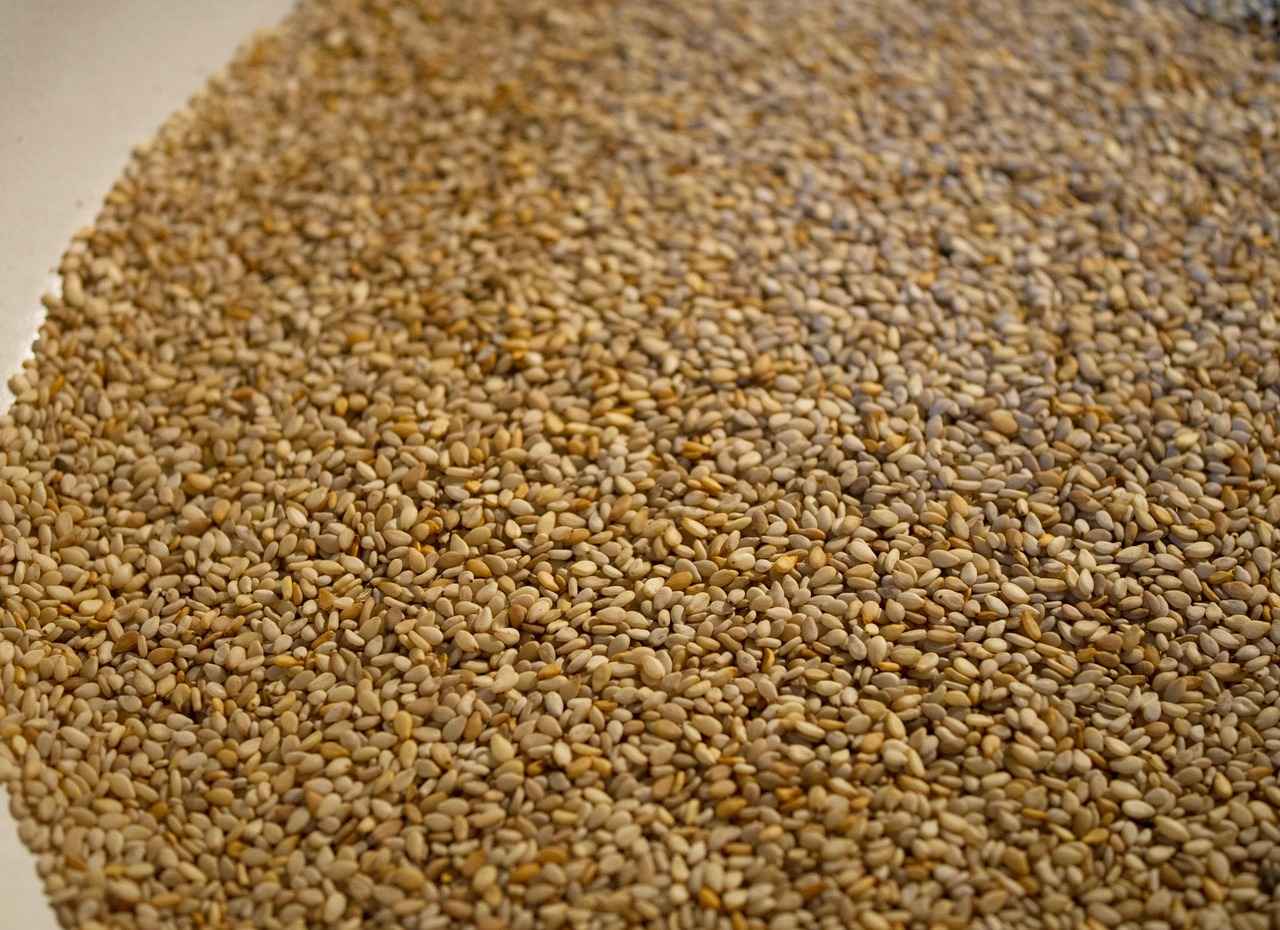
What Are Some Creative Chia Seed Recipes?
Chia seeds are not just a breakfast staple; they can be incorporated into a myriad of dishes that showcase their versatility and nutritional benefits. From snacks to desserts, chia seeds can elevate your meals with their unique texture and health advantages. Below are some creative recipes that highlight how you can use chia seeds in everyday cooking.
Energy bars are an excellent way to fuel your day, and using chia seeds can enhance their nutritional profile. Here’s a simple recipe:
- Ingredients:
- 1 cup rolled oats
- 1/2 cup nut butter (peanut, almond, etc.)
- 1/4 cup honey or maple syrup
- 1/4 cup chia seeds
- 1/4 cup dark chocolate chips (optional)
- Instructions:
- In a bowl, mix all the ingredients until well combined.
- Press the mixture into a lined baking dish.
- Refrigerate for at least an hour before cutting into bars.
This recipe is not only easy to make but also provides a nutrient-dense snack that you can enjoy on the go.
Chia seed jam is a fantastic alternative to traditional fruit jams, offering a healthier option without added sugars. Here’s how to make it:
- Ingredients:
- 2 cups fresh or frozen fruit (strawberries, blueberries, etc.)
- 2 tablespoons honey or agave syrup (optional)
- 3 tablespoons chia seeds
- 1 tablespoon lemon juice
- Instructions:
- In a saucepan, cook the fruit over medium heat until it breaks down.
- Add the sweetener and lemon juice, stirring well.
- Remove from heat and mix in the chia seeds.
- Let it sit for about 10-15 minutes until it thickens.
This jam can be used on toast, in yogurt, or as a topping for desserts, making it a versatile addition to your pantry.
Chia seeds can also be used in savory meals, adding a delightful crunch and nutritional boost. Consider these ideas:
- Chia Seed Crusted Chicken: Mix chia seeds with breadcrumbs for a healthy coating on chicken or fish.
- Chia Seed Salad Toppers: Sprinkle chia seeds on salads for added texture and nutrients.
These savory options demonstrate that chia seeds can be a part of any meal, not just breakfast.
Yes! Chia seeds can be blended into smoothies or stirred into soups for added thickness and nutrition. Here’s a quick smoothie recipe:
- Ingredients:
- 1 banana
- 1 cup spinach
- 1 tablespoon chia seeds
- 1 cup almond milk
- Instructions:
- Blend all ingredients until smooth.
- Serve immediately for a refreshing, nutrient-packed drink.
Incorporating chia seeds into your meals can be both creative and nutritionally beneficial. Whether you’re making a snack, a spread, or enhancing your main dishes, chia seeds offer endless possibilities.
Chia Seed Energy Bars: A Healthy Snack Option
Chia Seed Energy Bars are not just a delicious snack; they are also a powerhouse of nutrition, making them an ideal choice for anyone looking to boost their energy levels throughout the day. These bars are easy to make and can be customized according to your taste preferences, ensuring that you always have a healthy snack on hand.
Chia seeds are known for their high nutritional value. They are rich in omega-3 fatty acids, fiber, and protein, making them an excellent addition to your diet. When combined with other wholesome ingredients, chia seed energy bars become a fantastic source of sustained energy, perfect for pre- or post-workout fuel.
To create your own chia seed energy bars, you will need:
- 1 cup of rolled oats
- 1/2 cup of chia seeds
- 1/2 cup of nut butter (such as almond or peanut butter)
- 1/4 cup of honey or maple syrup
- 1/2 cup of mixed nuts or dried fruits (optional)
- 1/2 tsp of vanilla extract
Follow these simple steps to prepare your energy bars:
1. In a large mixing bowl, combine the rolled oats and chia seeds.2. Add the nut butter, honey or maple syrup, and vanilla extract. Mix until well combined.3. If desired, fold in mixed nuts or dried fruits for added texture and flavor.4. Line a baking dish with parchment paper and press the mixture firmly into the dish.5. Refrigerate for at least 1-2 hours to set.6. Once set, cut into bars and store in an airtight container in the fridge.
Making your own energy bars allows you to control the ingredients and avoid preservatives and excess sugars found in store-bought options. Additionally:
- You can tailor the recipe to suit your dietary needs, such as gluten-free or vegan.
- They are cost-effective compared to purchasing pre-made bars.
- Homemade bars can be customized with your favorite flavors, ensuring you never get bored!
To maintain freshness, store your energy bars in an airtight container in the refrigerator. They can last for up to two weeks, but you can also freeze them for longer storage. Just ensure they are well-wrapped to prevent freezer burn.
Absolutely! Feel free to experiment with different ingredients to create your perfect energy bar. Some popular additions include:
- Cocoa powder for a chocolatey flavor
- Protein powder for an extra protein boost
- Seeds like pumpkin or sunflower for added crunch
Chia seed energy bars are not only a nutritious snack option but also a versatile one. By incorporating various ingredients, you can create a snack that suits your taste and nutritional needs. Enjoy your homemade energy bars as a quick breakfast, a midday snack, or a post-workout treat!
Chia Seed Jam: A Healthy Spread
Chia seed jam has become a popular choice for health-conscious individuals seeking a natural and nutritious alternative to traditional fruit jams. Not only is it easy to prepare, but it also allows you to control the ingredients, making it a perfect addition to your breakfast or snack options.
Chia seeds are known for their high fiber content, which aids in digestion and promotes a feeling of fullness. Additionally, they are rich in omega-3 fatty acids, which are beneficial for heart health. By using fresh fruits, you can create a jam that is not only delicious but also packed with vitamins and antioxidants. This makes chia seed jam a healthier choice compared to store-bought jams that often contain added sugars and preservatives.
Creating chia seed jam is incredibly simple. Here’s a basic recipe to get you started:
- Ingredients:
- 2 cups of fresh fruit (such as strawberries, blueberries, or raspberries)
- 2 tablespoons of chia seeds
- 1-2 tablespoons of honey or maple syrup (optional, adjust based on fruit sweetness)
- 1 tablespoon of lemon juice
- Instructions:
- In a saucepan, heat the fresh fruit over medium heat until it begins to break down, about 5-10 minutes.
- Use a fork or potato masher to mash the fruit to your desired consistency.
- Stir in the chia seeds, sweetener, and lemon juice.
- Remove from heat and let the mixture sit for about 10-15 minutes until it thickens.
- Transfer to a jar and refrigerate. The jam will continue to thicken as it cools.
One of the best aspects of chia seed jam is its versatility. You can experiment with different fruits to create unique flavors. Here are a few ideas:
- Mango Chia Jam: Use ripe mangoes for a tropical twist.
- Mixed Berry Chia Jam: Combine various berries for a burst of flavor.
- Peach Chia Jam: Fresh peaches can add a sweet and tangy profile.
Chia seed jam can be used in numerous ways:
- Spread it on toast or pancakes for a delightful breakfast.
- Use it as a topping for yogurt or oatmeal.
- Incorporate it into smoothies for added flavor and nutrition.
Yes, chia seed jam can be stored in the refrigerator for up to two weeks. For longer storage, consider freezing it in an airtight container. This way, you can enjoy your homemade jam even when your favorite fruits are out of season.
In conclusion, chia seed jam is a simple, healthy, and delicious alternative to conventional jams. With its ease of preparation and the ability to customize flavors, it’s a fantastic addition to any meal. By incorporating chia seed jam into your diet, you can enjoy a sweet treat that is both nutrient-rich and satisfying.
Frequently Asked Questions
- What are chia seeds?
Chia seeds are tiny, nutrient-packed seeds derived from the Salvia hispanica plant. They are rich in omega-3 fatty acids, fiber, protein, and antioxidants, making them a popular health food.
- How can I add chia seeds to my breakfast?
You can easily incorporate chia seeds into your breakfast by adding them to smoothies, oatmeal, or making chia pudding. Just mix them with your favorite liquid and let them soak overnight!
- Can I use chia seeds in baking?
Absolutely! Chia seeds can be used in baking as an egg substitute or added to muffins and bread for extra moisture and nutrition. Just remember to mix them with water to create a gel-like consistency when substituting for eggs.
- Are there any risks associated with consuming chia seeds?
While chia seeds are generally safe, some people may experience digestive issues or allergies. It’s important to start with a small amount and drink plenty of water to avoid any discomfort.
- What is the recommended daily intake of chia seeds?
The recommended daily intake of chia seeds is about 1-2 tablespoons. This amount allows you to reap their health benefits without overdoing it!
- Can I make chia seed jam?
Yes! Chia seed jam is a simple and healthy alternative to traditional jam. Just combine fresh fruit with chia seeds and let it sit until it thickens. It’s delicious on toast or in yogurt!
